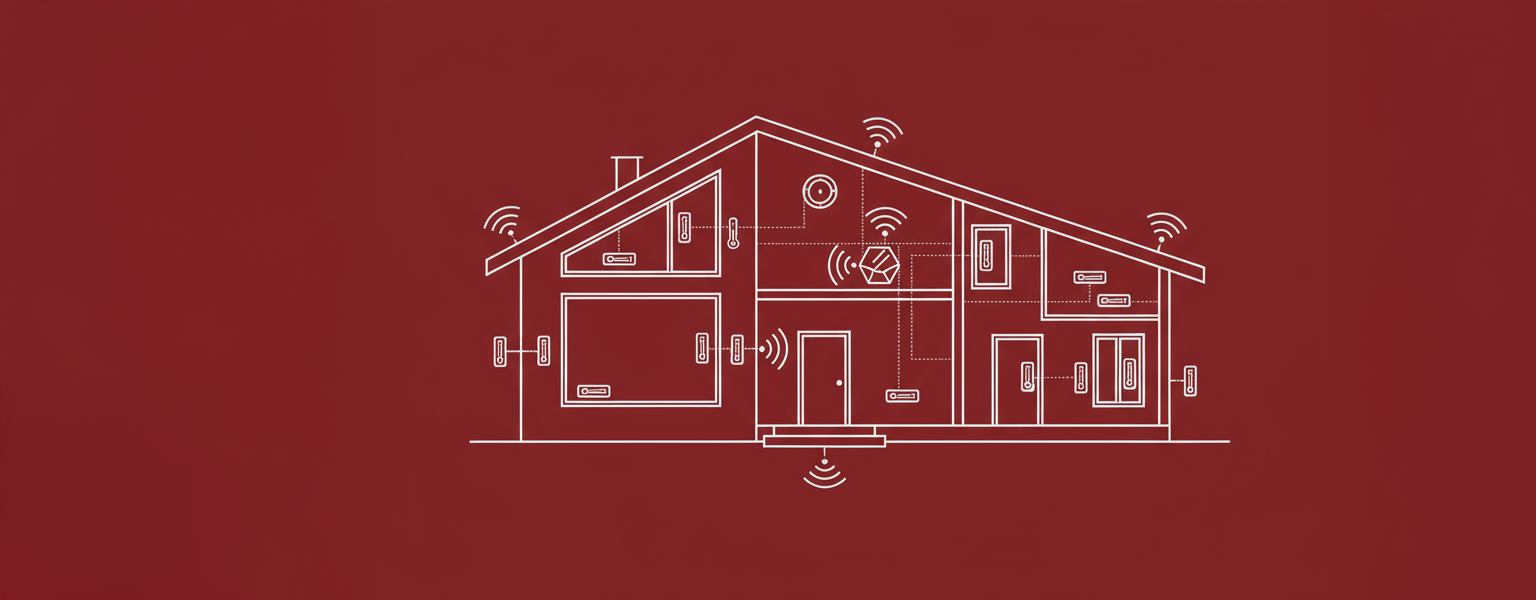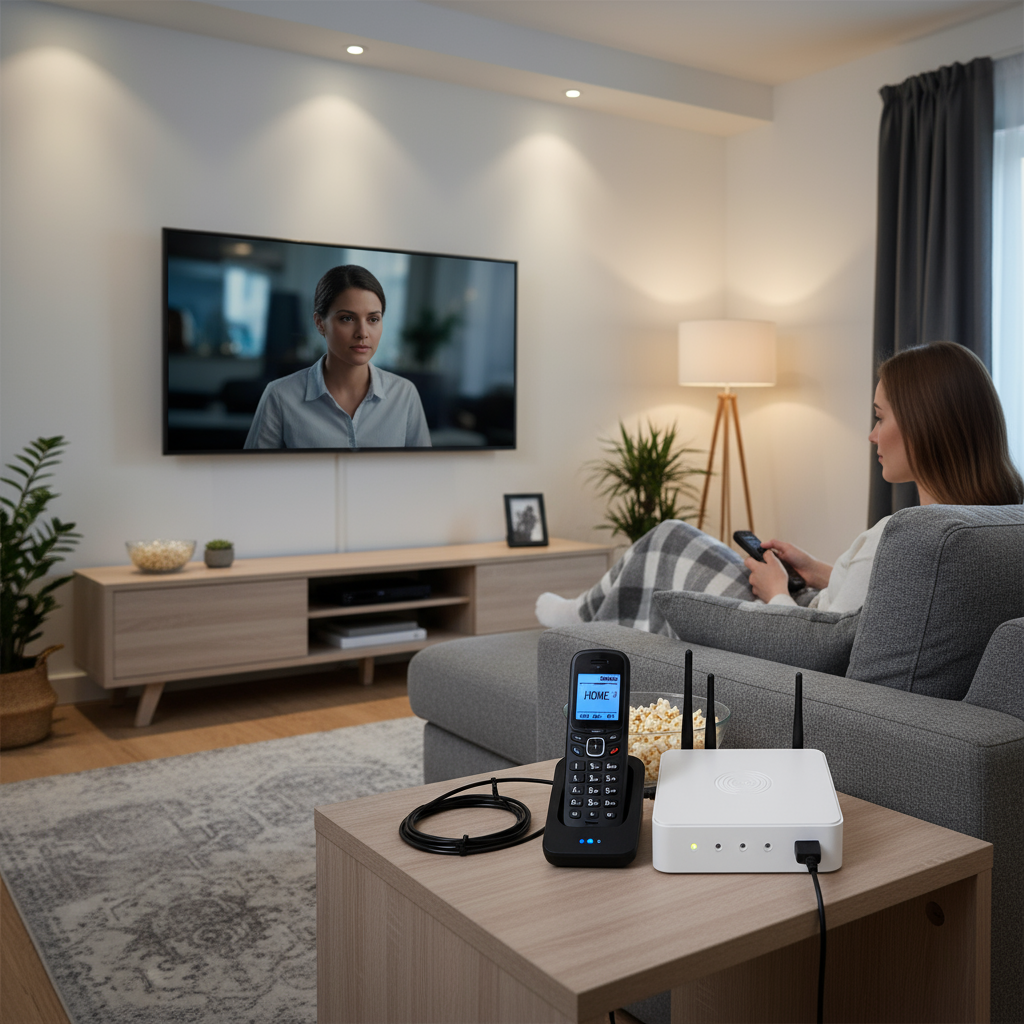DECT ULE

Overview
Ultra-Low Energy (ULE) is a wireless communication technology based on the DECT standard. ULE was announced in January 2011 and the first commercial products were launched later that year. ULE has been adapted for smart home automation and IoT applications due to its key benefits of low power consumption, long range, and reliable communication.
ULE communication range is, in fact, among the longest in the short range wireless communication technologies: over 50 meters in buildings and up to 300 meters in the open air. For the few cases where this range is not sufficient, repeaters can be used to extend the range. Similarly to DECT, ULE can also use more complex network architecture, with several bases connected with each other to cover extended areas (such as offices and larger buildings).
Operating in the dedicated 1.9 GHz frequency band, ULE experiences minimal interference compared to other wireless technologies. This makes ULE particularly effective for ensuring stable connections in smart home ecosystems, especially in larger homes or spaces with many competing wireless devices. ULE also extends the reach of smart home systems without needing additional repeaters or hubs.

Applications
ULE is ideally suited for smart home products where devices such as door and window sensors are often battery powered. ULE was designed to support battery-operated devices by minimising energy usage, allowing them to last longer between charges or battery replacements. With its ability to support mesh networking, ULE also extends the reach of smart home systems across entire houses, multiple floors or even outdoor spaces.without needing additional repeaters or hubs.
Smart homes often automate critical functions, like security systems, fire alarms, or climate control. Long-range connectivity ensures all devices stay linked to the central hub or Wi-Fi network without dead zones. This supports scalability as homeowners add more devices over time.
Primary application areas of ULE based wireless networks are for home automation, home security and climate control. Each of these application areas represent variety of dedicated devices.
Technical description
Similarly to DECT, ULE uses a dedicated radio frequency. The physical layer of ULE makes use of the existing ETSI DECT specification. The technical specification work for the upper part of ULE transport layer has been carried out in ETSI TC DECT, with updates to the following:
- Data Link Control
- Network Layer
- Interworking Unit
- Application Layer Protocol Negotiation
The basic ULE wireless network uses a “star network topology”; i.e. there is one main device, called “base”, which controls the network; the “base” is wirelessly connected to “nodes”, which usually are devices with dedicated functions, such as sensors, remote controls, actuators, smart meters, etc.
ULE enables simultaneous data and voice communication; this means that sensors are not limited to indicating the event, but also enable voice interface.
Enhancements were made to the DECT transport layer level by ETSI Technical Group DECT to adapt it to the requirements of the ULE wireless sensor networks:
- Low power operation, which enables ULE devices to operate on batteries for extended time period of years
- Extended security – ULE is using strong 128 bit AES encryption scheme vs. 64 bit encryption of DECT
ULE Transport and Physical layers are defined and standardised by ETSI. The ULE physical layer is identical to DECT physical layer, while the Transport layer was enhanced to better fit requirements of wireless sensor networks.
HAN-FUN
The ULE Alliance developed and defined HAN-FUN application layer protocol (Home Area Network FUNctional protocol). The HAN-FUN protocol defines the profiles of devices and sets requirements for application level interoperability of ULE based devices. The first version of HAN-FUN (released in November 2013) defines profiles of over two dozen different devices.
HAN-FUN ensures interoperability for the specificed applications and devices. In addition it supports proprietary extensions where required.
The application layer protocol HAN-FUN (Home Area Network FUNctional protocol) covers the following functions:
- Protocol Defininition
- Device Definition
- Device Management

ULE in the home gateway
Many of the home gateways deployed worldwide integrate DECT and implement the DECT base functionality. These gateways are usually software upgradable. A home gateway which already has DECT functionality can become ULE enabled by software upgrade.
Other DECT technologies

NR+
NR+ is purpose-built to meet the needs of demanding professional IoT applications, combining high-density (mMTC) connectivity with extended range. It enables next-generation use cases across smart energy, smart cities, building automation, and Industry 4.0.

Classic DECT
DECT is the global standard for cordless telephony communication – trusted for its reliability, interference-free performance, and easy deployment. From homes to enterprises, it also powers everything from smart audio devices to professional headsets and microphones.

DECT Evolution
DECT Evolution delivers higher data rates and ultra-low latency, making it the perfect fit for real-time, high-quality audio in pro microphones, intercoms, gaming headsets, and controllers.
FAQ
Lorem ipsum dolor
The DECT technology has evolved over time in order to address needs across different industries.
























